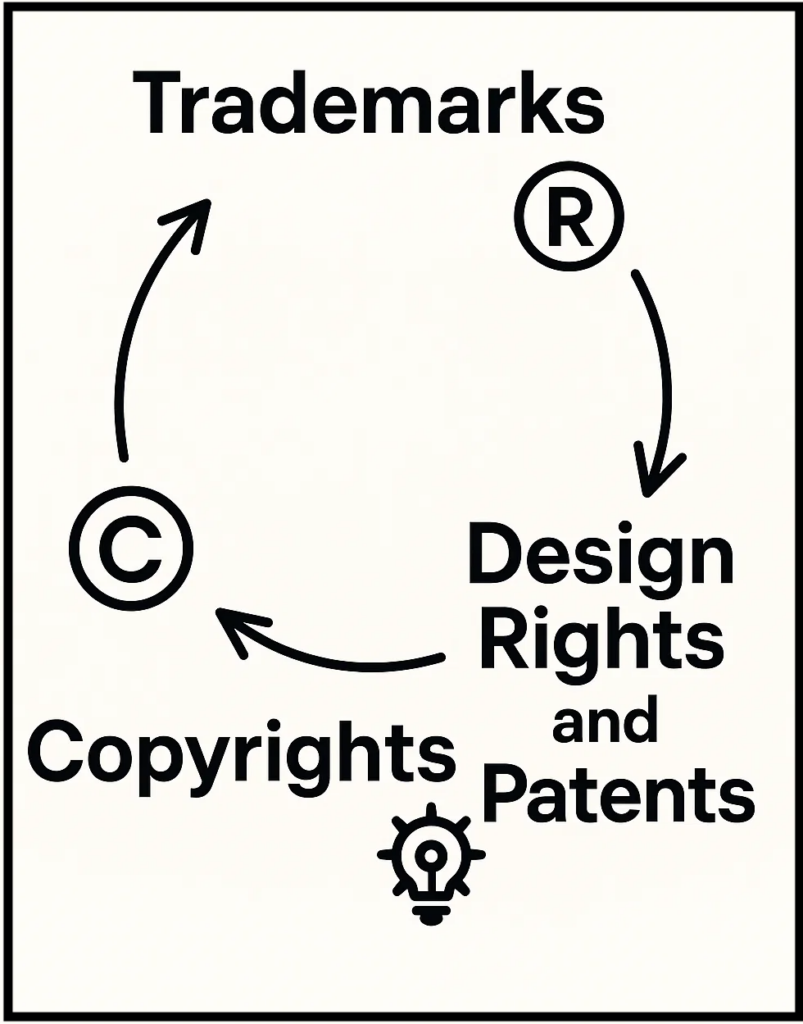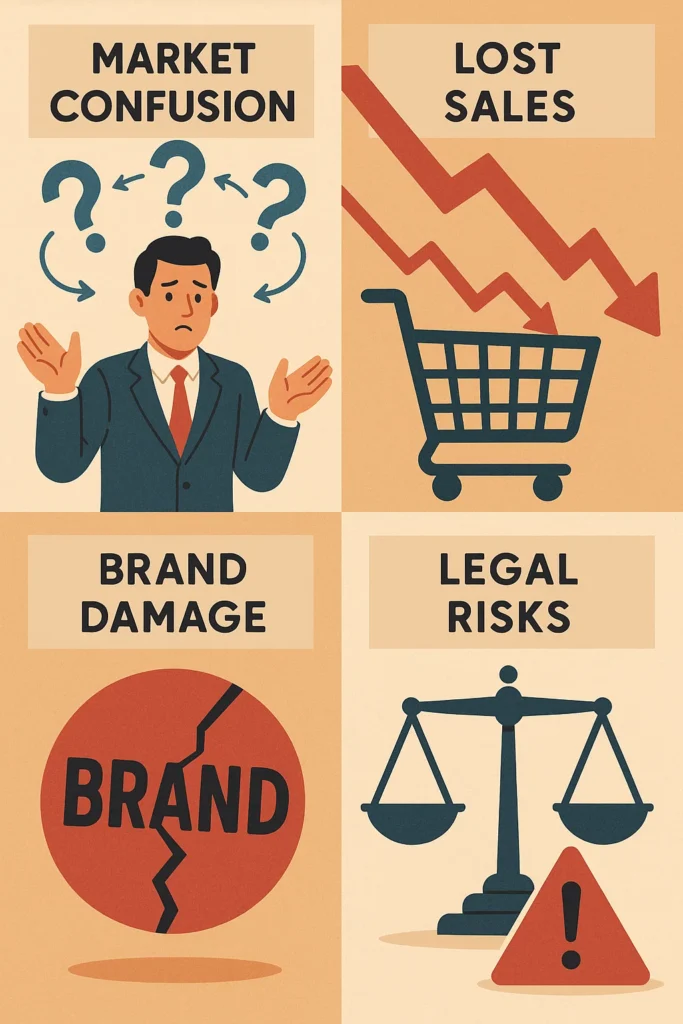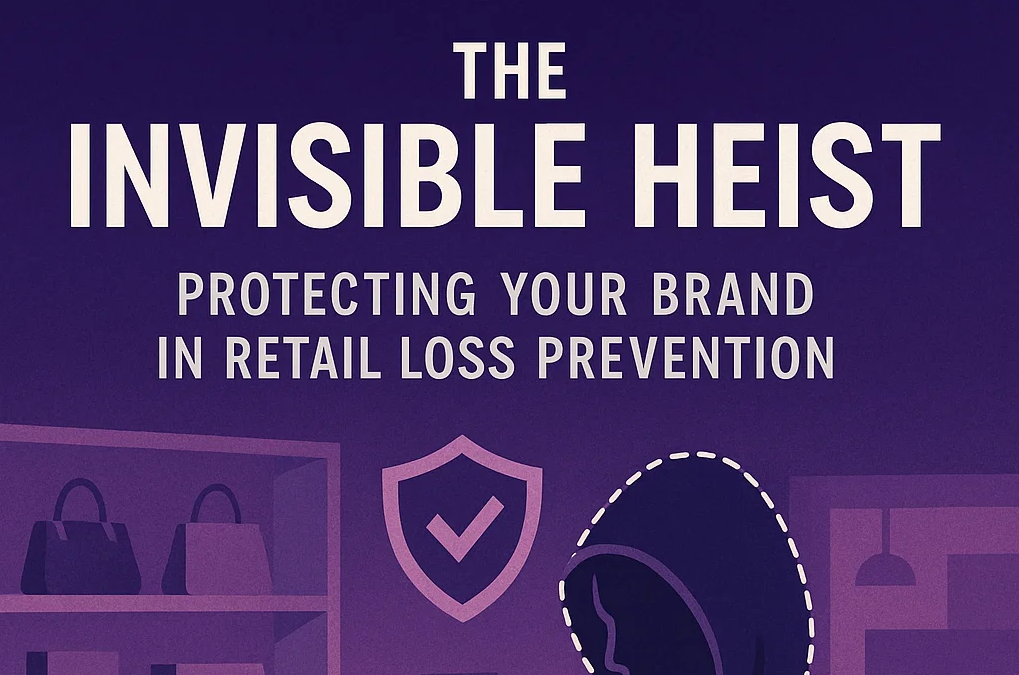When people think about “Loss Prevention” and protecting your brand in retail they often picture security cameras, anti-theft tags, gates, and stopping shoplifters. These are real problems. But there’s another kind of loss that’s harder to see. It doesn’t take products off the shelves, it takes trust, brand value, and even a business’s identity. This is the world of Intellectual Property (IP) protection and brand safety.
It’s about keeping your brand’s identity safe from copies, fakes, and misuse. Protecting your brand helps your business grow and keeps your reputation strong.
What Is IP and Why Does It Matter?

Think of Intellectual Property (IP) as the special design, name, or idea that makes your product different from others.
- Trademarks are things like your logo, name, colors, or slogans (like the Nike swoosh or Coca-Cola bottle shape).
- Copyrights protect creative work like art on packaging, characters, or even special text and designs.
- Design Rights and Patents protect how a product looks or works, like a special toy design or tech feature.
Brand Protection means guarding these things from being copied or misused. It includes checking the market, stopping fakes, and keeping your reputation strong.
Using AdmiralBridge incident forms, retailers and brands can report when they find fake products or misuse of their designs. These forms help teams collect details, track patterns, and act fast to stop IP theft.
How IP Gets Stolen: Real-Life Examples
Take Star Wars, a brand owned by Lucasfilm/Disney. Everything from character designs to famous quotes is protected IP.
But many small shops or online sellers create unlicensed Star Wars items like:
- T-shirts with Grogu (Baby Yoda)
- Millennium Falcon keychains
- Hoodies with “May the Force Be With You”
They don’t have permission to use these characters or logos. That’s IP theft. It’s like using someone else’s hard work to make money without paying for it.

This causes real harm:
- Market Confusion: Customers might think fake products are real.
- Lost Sales: Buyers may choose fakes instead of real licensed items.
- Brand Damage: Low-quality knockoffs hurt the brand’s image.
- Legal Risks: Sellers of fake items can face lawsuits or fines.
Retailers that sell these fakes—on purpose or by mistake—can lose their reputation and face legal trouble. Using AdmiralBridge incident forms, stores can flag questionable merchandise and check if it’s officially licensed.
Not Selling Fakes, But Still Breaking the Rules
Sometimes businesses don’t sell fake products, but they still misuse protected IP. For example:
- A coffee shop uses a picture of Yoda on a poster to sell drinks.
- A gym uses Darth Vader lifting weights in an ad.
- A car dealership compares its van to the Millennium Falcon.
They may think it’s fun, but it’s still wrong. These businesses are using someone else’s IP to promote themselves without permission.
Why this is a problem:
- It confuses customers about who supports or sponsors the business.
- It breaks copyright laws.
- It weakens the value of the original IP.
Retailers can use AdmiralBridge incident forms to track and report these marketing mistakes internally. This helps protect their business from bigger problems later.
The Bigger Danger: Counterfeit Products
Counterfeits are fake versions of real products, made to trick customers. They show up in many industries:
- Fashion: Fake designer bags or shoes
- Tech: Counterfeit chargers or headphones
- Cosmetics & Auto Parts: Unsafe fakes pretending to be from trusted brands
Why this matters:
- Lost Sales: Every fake item sold is a sale lost by the real brand.
- Safety Risks: Fakes may not be safe or tested.
- Returns & Complaints: Customers may blame the real brand for poor quality.
- Legal Trouble: Selling fakes can lead to lawsuits and big fines.
Retailers can prevent these issues by using AdmiralBridge to create incident forms and report suspicious products early. The system helps track complaints, returns, and supplier issues in one place.
How to Protect Your Store and Your Brand
- Check Your Suppliers: Always buy from trusted sources. Ask for proof of licensing if you’re selling branded items.
- Train Your Staff: Teach your team to spot red flags like odd packaging or missing official tags.
- Watch Your Website: If you sell online, make sure listings don’t include unlicensed or fake items.
- Make Rules Clear: Have a policy for checking IP rights before selling new products.
- Work With Brand Owners: Some companies like Disney offer tools and training to help retailers identify fakes.
- Take Action: If you find something fake, remove it right away and investigate where it came from.
AdmiralBridge makes this easy by giving you a central place to record, track, and investigate these incidents. The incident forms are customizable and can include photo uploads, product descriptions, and supplier information.
The Bottom Line: Protecting your Brand in Retail
Protecting your brand in retail loss prevention isn’t just about catching thieves. It’s about guarding your brand’s identity and value and protecting what makes you special. Fake products, stolen logos, and unlicensed ads steal more than just money, they steal trust and loyalty.
By staying alert and using tools like AdmiralBridge incident forms, retailers can spot problems early, protect their brand, and make sure their success is built on something real, not on someone else’s story.
AdmiralBridge is actively seeking experienced professionals with expertise in brand protection, IP enforcement, and retail investigations to help us expand and enhance our capabilities in supporting these complex cases. As we continue developing tools like our incident form system to capture and track intellectual property violations, we’re looking to collaborate with specialists who can provide insight, strategy, and real-world experience. Together, we aim to build stronger solutions that protect brand integrity, reduce retail losses, and support effective enforcement actions.

